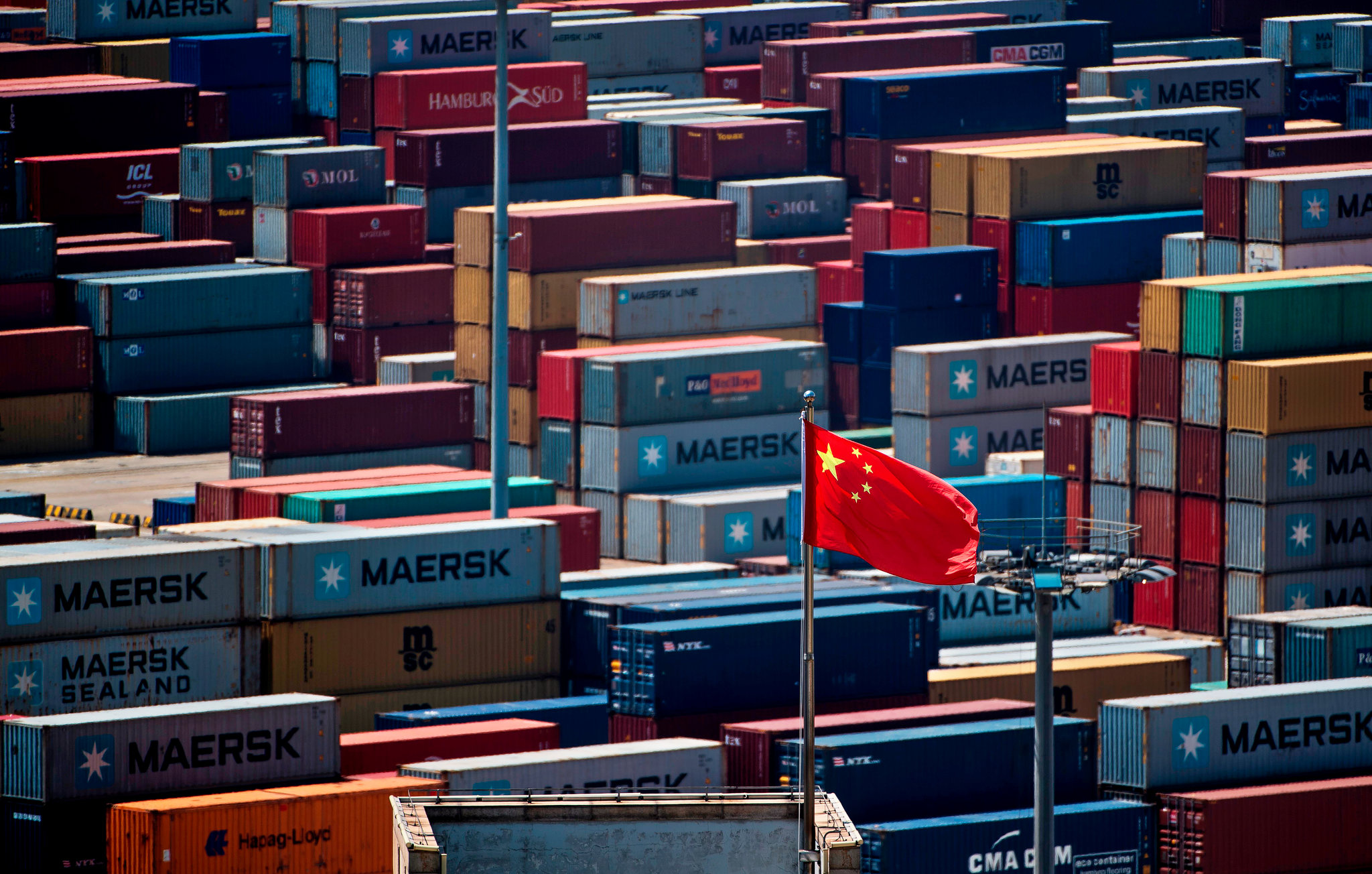US Slaps 3,521% Tariffs On Some Southeast Asian Solar Products: Impact Analysis

Table of Contents
Impact on the US Solar Market
The immediate and most visible impact of these steep US solar tariffs will be felt within the American solar market itself.
Increased Solar Panel Prices
The 3,521% tariffs will almost certainly lead to a substantial increase in the price of solar panels across the US. This price hike will have a ripple effect throughout the industry.
- Increased costs for residential and commercial solar installations: Homeowners and businesses looking to install solar panels will face significantly higher upfront costs, potentially making solar energy less financially attractive. This could lead to a decrease in new installations and a slowdown in the overall adoption rate of solar power in the US.
- Reduced consumer demand due to higher prices: The increased cost of solar panels could dampen consumer demand, leading to reduced orders and potentially impacting the profitability of solar installers. This could cause some smaller companies to struggle, especially those relying heavily on Southeast Asian imports.
- Potential slowdown in the expansion of solar energy projects: Large-scale solar farm deployments and utility-scale solar projects will also be affected. The higher costs could make these projects less economically viable, slowing down the expansion of renewable energy infrastructure across the country.
Supply Chain Disruptions
The US's heavy reliance on Southeast Asian manufacturers for solar panels will inevitably create significant supply chain disruptions.
- Difficulty sourcing affordable and reliable solar panels: The tariffs will limit access to affordable solar panels from a key manufacturing region, forcing companies to explore alternative, potentially more expensive, sources. This might involve sourcing from domestic manufacturers or other international suppliers, which could involve added logistical complexities and lead times.
- Potential delays in large-scale solar farm deployments: These delays could impact the ability to meet renewable energy targets and could lead to increased costs due to project timelines being pushed back. This could hinder the achievement of national climate goals.
- Increased reliance on domestic or other international manufacturers: The US will need to find alternative sources for solar panels, potentially boosting domestic manufacturing but also relying more heavily on other countries, shifting the geopolitical dynamics of solar panel production.
Consequences for Southeast Asian Solar Industries
The impact on Southeast Asian solar industries will be severe, with potentially long-lasting consequences.
Significant Export Revenue Losses
The 3,521% tariffs represent a near-total blockage of access to the lucrative US market for many Southeast Asian solar manufacturers.
- Reduced production capacity due to decreased demand from the US: Facing a sharp decline in US exports, factories may be forced to reduce production, leading to underutilized capacity and potential losses.
- Potential job losses across the Southeast Asian solar manufacturing sector: The decline in production and export revenue will inevitably result in job losses across the entire supply chain, from manufacturing to logistics.
- Increased pressure on businesses to adapt to shifting market dynamics: Companies will need to rapidly adapt by diversifying their markets, investing in new technologies, and finding alternative export destinations.
Diversification of Export Markets
Southeast Asian solar companies will be forced to seek new export markets to offset the loss of the US market.
- Increased focus on European and Asian markets: Companies will likely intensify their efforts to penetrate other markets such as the European Union and various Asian countries. This requires significant marketing and logistical investments.
- Investment in innovative technologies to remain competitive: To remain competitive, companies will need to invest in research and development to produce more efficient and cost-effective solar panels, potentially focusing on niche markets.
- Development of stronger relationships with non-US buyers: Building strong and reliable relationships with buyers in new markets will be crucial for long-term survival and growth.
Geopolitical Implications and Trade Wars
The US's imposition of these tariffs has significant geopolitical implications and could escalate existing trade tensions.
Escalation of Trade Tensions
The tariffs could trigger retaliatory measures from Southeast Asian governments, potentially escalating trade tensions between the US and these nations.
- Retaliatory measures from Southeast Asian governments: Affected countries may retaliate with tariffs or other trade restrictions on US goods, further disrupting trade relationships.
- Damage to international trade cooperation: This action undermines international cooperation on trade and could negatively impact global economic stability.
- Uncertainties in the global solar market: The unpredictable nature of these trade disputes creates uncertainty for investors and businesses involved in the solar energy sector worldwide.
Impact on Global Solar Energy Adoption
The price increases and supply disruptions caused by the tariffs could have a ripple effect on global solar energy adoption, potentially hindering efforts to combat climate change.
- Reduced investment in renewable energy globally: The uncertainties created by the trade dispute could lead to reduced investment in renewable energy projects worldwide.
- Potential setbacks in achieving climate goals: Higher solar panel prices and supply chain disruptions could make it harder to achieve international climate goals and targets for renewable energy adoption.
- Increased pressure to find alternative, cost-effective solar solutions: The situation will likely spur innovation and investment in alternative solar technologies and manufacturing processes to reduce reliance on Southeast Asian imports.
Conclusion
The imposition of 3,521% tariffs on Southeast Asian solar products by the US carries significant implications for the global solar industry. While aiming to protect domestic interests, these tariffs are likely to lead to increased solar panel prices in the US, disrupt supply chains, and severely impact Southeast Asian solar manufacturers. The potential for escalating trade tensions and a slowdown in global solar energy adoption underscores the complexity of this issue. Understanding the multifaceted impact of these US solar tariffs is crucial for navigating the evolving landscape of renewable energy and trade policy. To stay informed about further developments and their implications on the solar energy sector, continue following news and analyses on US solar tariffs and their effects on Southeast Asian solar exports.

Featured Posts
-
 M Net Firmenlauf Augsburg Ergebnisse Und Bilder Vom Heutigen Rennen
May 30, 2025
M Net Firmenlauf Augsburg Ergebnisse Und Bilder Vom Heutigen Rennen
May 30, 2025 -
 Will Manchester Uniteds Bid For Sporting Star Succeed Amorims Stance
May 30, 2025
Will Manchester Uniteds Bid For Sporting Star Succeed Amorims Stance
May 30, 2025 -
 Government Sacks Sierra Leone Immigration Chief Amidst Controversy
May 30, 2025
Government Sacks Sierra Leone Immigration Chief Amidst Controversy
May 30, 2025 -
 Kodiak Shellfish Harvest Under Threat Two Harmful Algal Blooms In A Row
May 30, 2025
Kodiak Shellfish Harvest Under Threat Two Harmful Algal Blooms In A Row
May 30, 2025 -
 Building Cooler Indian Cities The Importance Of Advanced Materials In A Changing Climate
May 30, 2025
Building Cooler Indian Cities The Importance Of Advanced Materials In A Changing Climate
May 30, 2025
Latest Posts
-
 Legal Battle Erupts Dragon Den Alum Claims Puppy Toilet Idea Infringement
May 31, 2025
Legal Battle Erupts Dragon Den Alum Claims Puppy Toilet Idea Infringement
May 31, 2025 -
 Puppy Toilet Patent Dispute Dragon Den Entrepreneur Takes Legal Action
May 31, 2025
Puppy Toilet Patent Dispute Dragon Den Entrepreneur Takes Legal Action
May 31, 2025 -
 Dragon Den Star Sues Competitor Over Stolen Puppy Toilet Invention
May 31, 2025
Dragon Den Star Sues Competitor Over Stolen Puppy Toilet Invention
May 31, 2025 -
 Dragon Den Winners Lawsuit Accusations Of Puppy Toilet Idea Theft
May 31, 2025
Dragon Den Winners Lawsuit Accusations Of Puppy Toilet Idea Theft
May 31, 2025 -
 Estevans 2024 Street Cleaning Schedule Know Before You Go
May 31, 2025
Estevans 2024 Street Cleaning Schedule Know Before You Go
May 31, 2025
